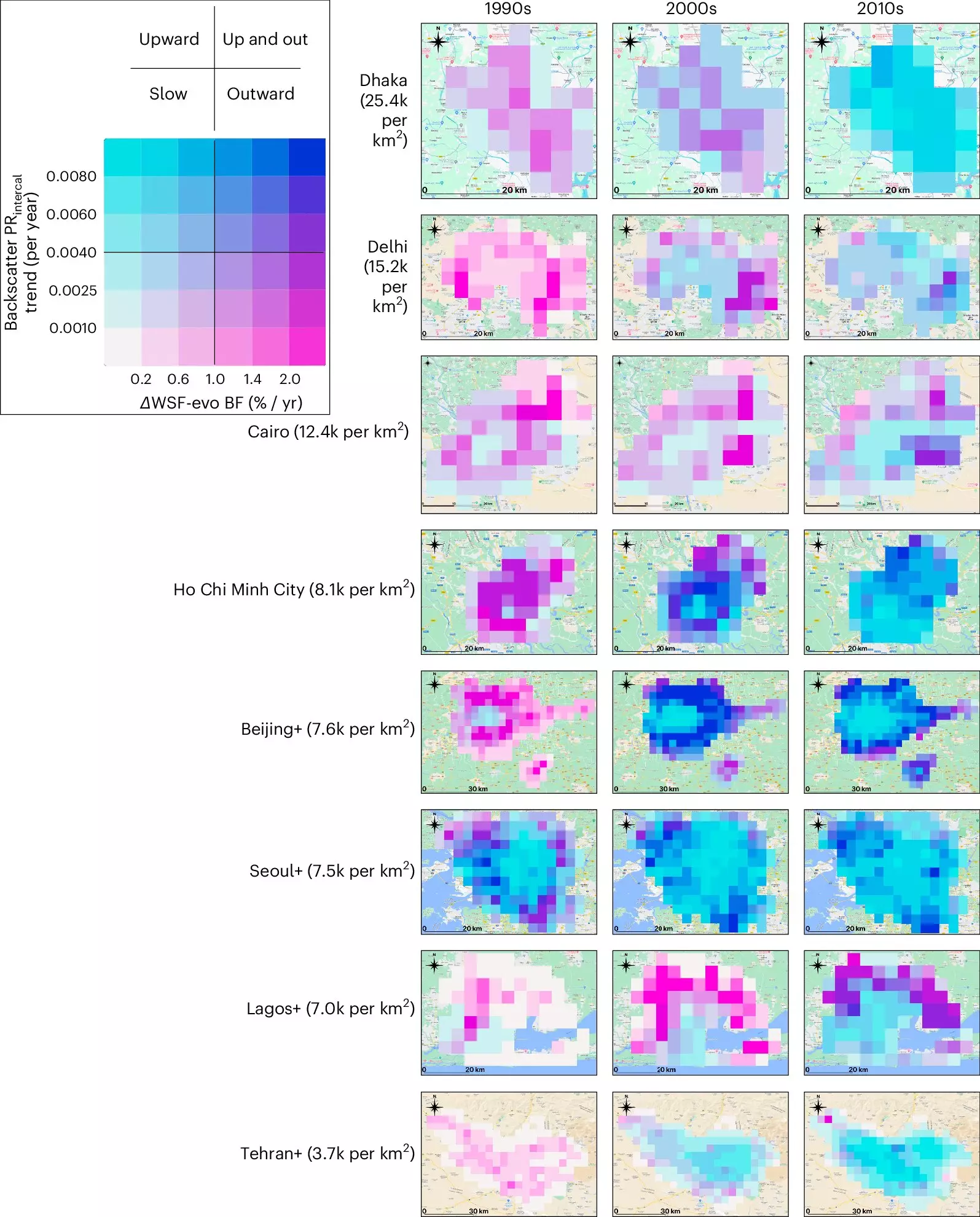Recent research conducted by a team of Earth scientists, environmental engineers, and geomaticists has shed light on an interesting trend in urban development. The study, published in the journal Nature Cities, revealed that modern cities around the world have been experiencing more vertical growth than horizontal expansion. This finding challenges the traditional notion of cities sprawling outward as they grow, highlighting the shift towards building upwards instead.
Historically, cities have expanded by increasing their footprint on the ground as more buildings are constructed. However, with advancements in architecture and technology, cities have now started to focus on vertical growth. This shift is driven by the need to accommodate the influx of people moving from rural areas to urban centers. By building taller structures such as skyscrapers, cities are able to optimize limited space and cater to the growing population more efficiently.
To better understand this phenomenon, the research team analyzed two types of satellite data for over 1,500 cities worldwide. One type of data provided a two-dimensional view of a city’s footprint, while the other, based on microwaves, offered a three-dimensional perspective including vertical growth. The analysis spanned from the 1990s to the 2010s, capturing the evolution of urban growth patterns over time.
The findings of the study have significant implications for urban planners and policymakers. By recognizing the trend towards upward growth in modern cities, decision-makers can better anticipate future needs and allocate resources accordingly. Understanding how cities are evolving spatially allows for more effective planning strategies, ensuring sustainable development and efficient resource distribution.
While the overall trend indicates a shift towards vertical expansion, the researchers noted variations among different regions. Some cities in Africa, China, and Southeast Asia continued to experience more outward growth compared to upward growth. This variation highlights the diverse nature of urban development around the world and underscores the importance of considering local factors in planning for sustainable growth.
The study’s findings provide valuable insights into the changing landscape of urban development. As cities continue to grow and evolve, understanding the dynamics of upward and outward expansion is essential for effective urban planning. By recognizing and adapting to these trends, cities can better prepare for the challenges and opportunities that come with rapid urbanization.


Leave a Reply